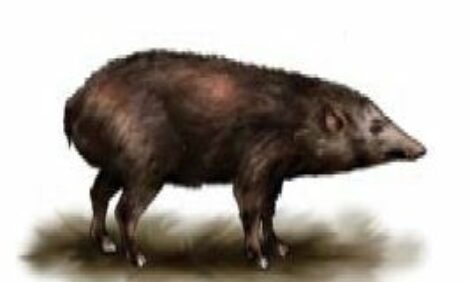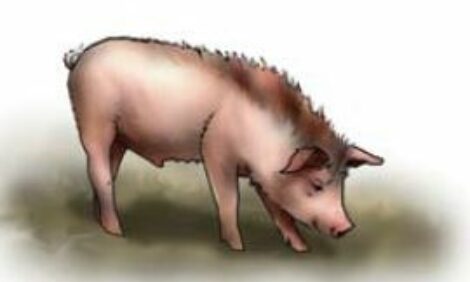



Guinea Hog
The Guinea Hog is a small, black breed of swine that is unique to the United States. Also known as the Pineywoods Guinea, Guinea Forest Hog, Acorn Eater, and Yard Pig, the breed was once the most numerous pig breed found on homesteads in the Southeast. Despite its name the breed is not from the country of Guinea, though the foundation stock is thought to be derived from West Africa. The imports were documented as early as 1804 by Thomas Jefferson and other Virginia farmers; these large, square animals were called Red Guineas, because they had red or sandy-coloured hair. Red Guineas were common throughout the mid-Atlantic region during the 1800s, though the breed disappeared as a distinct population in the 1880s. This process was completed when most of the red breeds of hogs in the eastern United States were combined to form the new Jersey-Duroc. Although extremely rare, occasional Guinea Hog breeders of today will find red highlights in the hair of their Guineas, and even more rarely is a completely red individual born.
The Guinea Hog is a rare breed with a black coat, sturdy body, curly tail and upright ears. Guinea Hogs are small pigs compared to modern breeds; they weigh less than 200lbs and will yield 50-100lbs of meat and fat, and so are not used in commercial farming commonly, if at all. They are good as free-range foragers, but are also at home in a farmyard and are reasonably even-tempered. Guinea Hogs can be big-boned, medium-boned, or fine-boned, with varying lengths of leg; this is probably because there was very little organised, selective breeding during its popularity, and it is suspected that there were a number of distinct American Guineas in the past. The Guinea Hog became rare as the homestead hog disappeared, and it survived only in the most isolated parts of the Southeast. Unfortunately the Red Guinea no longer exists, and its exact relationship with the American Guinea and what proportions of other breeds are in its background are not known for certain. However, that there is a relationship is shown by the occasional birth of a reddish pig to the normally bluish-black American Guinea parents. During the 1980s, new herds of Guinea Hogs were established, and the breed has enjoyed a new resurgence on small farms and modern homesteads. They are appropriate for use on pasture or in wooded areas where they thrive on foraging, and their small size, gentle temperament, and efficiency make them suitable for many smaller properties. In 2005 the American Guinea Hog Association was formed which works to ensure its continued existence.
Guinea Hogs have uniquely desirable flavour characteristics. The fat of the Guinea Hog is abundant and firm, and has found interest with chefs and butchers for making charcuterie (old world style cured meats). Their rendered lard would be of particular interest to pastry chefs for use in crusts and dough. The have an exceptionally tender meat and produce fine hams.








